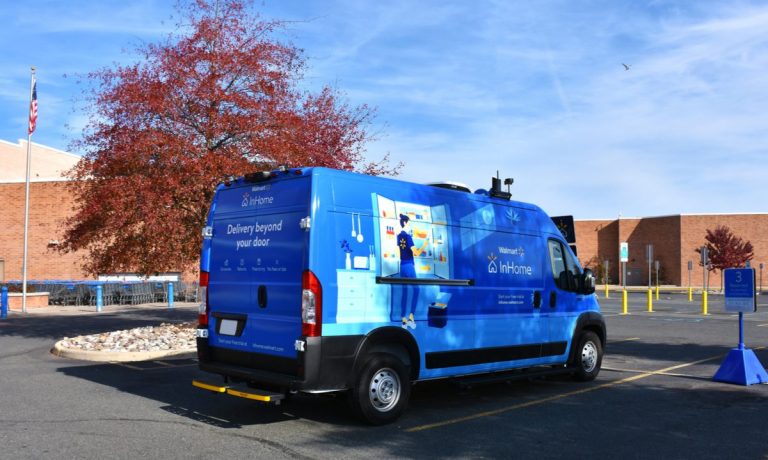Last-mile delivery is seeing increased competition from smaller players taking on pricey rivals like UPS and FedEx.
There’s also the looming possibility of a labor strike hitting UPS by this summer, and retailers that got hurt by supply chain snags of 2021 aren’t waiting for the other shoe to drop there. It’s creating new opportunities for smaller regional and superregional carriers and triggering expansions of logistics operations among some major retailers, like Walmart.
On Wednesday (Jan. 18), the mammoth retailer announced plans to expand the Private Fleet Development Program it launched last year to beef up deliveries for its growing eCommerce business.
“Through this expanded pilot, associates in stores, distribution centers, fulfillment centers, and transportation offices within a 50-mile radius of a participating transportation office will be eligible to apply to the Associate-to-Driver program. After they complete the 12-week training course and earn their CDLs, they have a coveted Walmart driving job ready to step into,” Walmart said in a press release.
While many retailers have historically preferred consolidating with one shipper for discounts and the power of relationships, inflation and shipping problems disrupted that status quo, which pushed more companies to make deals with multiple carriers for the vital last-mile segment.
Read more: Data Powers New Possibilities for Logistics-as-a-Service
Advertisement: Scroll to Continue
Using Amazon as an example, the eCommerce titan has diversified its fulfillment to make good on next-day and same-day deliveries by opening distribution centers around the country, while mixing in smaller carriers like Utah-based PonyEx.
“One of the biggest reasons to deliver through last-mile carriers is customer service,” PonyEx said in a blog post. “Consumers are now used to free, fast shipping on everything from same-day grocery orders to major appliances. Because the volume of online purchases has skyrocketed, last-mile delivery services enable efficient transportation and delivery. In turn, this builds customer loyalty, [and] helps keep shipping costs down.”
In addition to its own extensive in-house delivery fleet, Amazon is actively seeking applicants for its Amazon Delivery Service Partner program touting “low startup costs, built-in demand, and access to Amazon’s technology and logistics experience, this is an opportunity to build and grow a successful package delivery business.”
See also: Amazon’s Logistics Fine-Tuning Spotlights Last-Mile Focus
Also, on Monday (Jan. 23), global third-party logistics (3PL) provider ShipBob said in a blog post that using a 3PL “lets you leverage both the inherent last-mile strengths of USPS, innovations from UPS and FedEx, and additional support from regional carriers we partner with.”
The U.S. Postal Service (USPS) is a crucial link in last-mile strategies from Amazon to Zulily, with the eCommerce parcel delivery business proving a boon to the money-losing mail system.
In a year-end, 2022 missive on delivery failures to last-mile locations, the USPS Office of the Inspector General (OIG) spoke about “opportunities for USPS to leverage existing tools and technologies to identify the actual number of undelivered and partially delivered routes,” including integrating delivery operations data with Informed Delivery, and using data on delayed mail and undelivered and partially delivered routes “to notify customers of delays and service outages in near real-time.”
